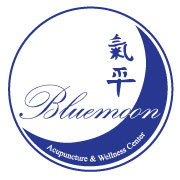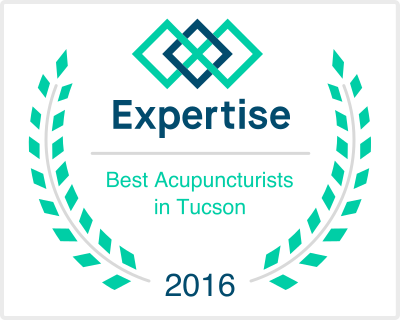
Ancient healers moving to the forefront of modern medicine
By Michelle Simon, PhD, ND
Did you know that when you pop an aspirin, you are making use of the healing power of plants? Most of us don’t realize how intertwined modern medicine is with ancient plant wisdom. For example, aspirin’s active ingredient, salicin, originally came from willow bark, the use of which dates back to the Greek physician Hippocrates (400 BC) who advised his patients to chew on the bark to bring down fevers.
These days most medications are synthesized in a laboratory. But for as many as half of them, their backstory is to be found in the wild. During the last three decades, up to 50 percent of the drugs approved for use in humans have been sourced either directly or indirectly from plants. As science turns a more appreciative lens towards the potential of plants, in tandem with advances in research, plants are moving back into the forefront of healing.
It’s not only in pharmaceuticals that plants exhibit their healing power, though. In 2003, the World Health Organization (WHO) estimated that 80 percent of people worldwide relied on herbal medicines for some aspect of their primary healthcare needs. Roughly 21,000 plant species have the potential for being used as medicinal plants, with many more being identified each year.
Although we tend to take plants for granted, they are, of course, indispensable. Humble healers, plants are made up of roots, stems, and leaves, and many produce flowers, fruit, and seeds. Plants are the original sun worshippers, deploying photosynthesis, a process that involves sunlight, water, and carbon dioxide, to produce their own food. Packed with bioactives and phytochemicals, plants contain dynamic, healing compounds such as alkaloids, glycosides, terpenes, and phenols. These molecular structures have evolved over millennia to enhance the plants’ survival.
When we look at the way plants interact with the human body, we see an ongoing relationship. Information is carried by the plant’s cellular structure to the informational systems of the human body. Our dependency on plants, used for both food and medicine over millennia, means we have evolved along with them.
As science catches up with herbal medicine, its rigorous investigative methods shine a light on how plants actually work. Now, there’s more understanding of the active chemistry of a plant, both how the various parts function as isolated extracts and as a synergistic whole
Plant medicine has its advantages: It is less toxic than synthetic drugs and has fewer adverse side effects. And for almost every medicinal need you can imagine, there is often a viable plant-based approach that can complement—or sometimes even replace—conventional medications. (Of course, please consult your doctor or healthcare provider before making any changes to your medicines. And pay attention to potential herb-drug interactions as well.) Here are three major categories of medicinal plants—and what you need to know about them.
Antimicrobial
This class of plants can be thought of nature’s sanitizer: they kill or inhibit growth of microorganisms. Traditional systems of medicine the world over depend on plants as their main source of healing. In some parts of the world, antimicrobial and antibacterial plants are the only resources available to treat different infections. Many of these kinds of antimicrobial plants are spices, which not only flavor food, but also keep it from spoiling. Spices have compounds in them that keep food from becoming contaminated by bacteria and other microbes. Often, a plant’s resins can be extracted into an essential oil—think basil, oregano, thyme, and rosemary—that can prevent microbial growth.
Garlic is one of the most powerful antibacterial botanicals, given to soldiers in both world wars to prevent gangrene.Today, garlic has uses as diverse as promoting cardiovascular health and repelling mosquitos. Research has also been done on its ability to bolster immune function. Some studies have found evidence that it may show promise in the battle against antibiotic-resistant bacteria such as staphylococcus aureus, commonly known as MRSA, by curtailing the bacteria’s ability to reproduce.Unlike antibiotics however, garlic does not wreak havoc on the body’s intestinal flora balance.
Try it: To unleash garlic’s healing powers, you must consume it in a certain way. Garlic must be crushed, cut or minced to release the allicin—its volatile, active component. Cooking destroys allicin, which means eating garlic raw is essential. Garlic supplements do not seem to be as potent as eating fresh garlic raw. Try adding raw minced garlic to your salad dressing, or mix it with olive oil and lemon juice to make a sauce to drizzle over vegetables.
Adaptogens
Naturopathic medicine utilizes a synergistic approach to stress. For millennia, plants have been used to help the body self-regulate its stress response whether in relation to external physical substances, toxins, or internal stress molecules, such as cortisol. For over half a century, the term adaptogen has been used to describe an elite class of herbs: safe, nontoxic plants that specifically modulate our ability to withstand stress. The bottom line? Like their name implies, their main role is to facilitate a fluid, adaptive response, introducing a happy middle ground amidst the fight or flight continuum.
In an integrative approach to medicine, adaptogens are frequently used to address a range of common issues. All adaptogens have an overall toning affect, offsetting the inflammatory aspects of stress by strengthening and stabilizing the body. Adaptogens are the best kinds of generalists: They have a nonspecific agenda, working to balance how the body functions as a whole, rather than as a collection of discrete parts.
Green tea, ginseng, rhodiola, ashwagandha and eleuthero, a few of the big name adaptogenic herbs, have played a starring role in ancient plant-centric practices such as Ayurveda and Traditional Chinese Medicine. Other adaptogens, such as maca, tulsi and turmeric, have in the last decade become herbal stalwarts in the United States.
Try it: Originally from Peru, maca is a root sold in powdered form. Once used to boost Inca warrior’s endurance, it’s now prized for modern-day benefits, such as supporting sexual function and balancing hormones. Maca’s mild taste makes it easy to add to a wide array of recipes. Try putting a teaspoon in your smoothie or mixing it with yogurt. Try Chef Lauren’s Pumpkin Spice Maca Milkshake.
Digestive Support
The digestive system is coming into a new prominence, thanks in part to all the research done on the importance of the microbiome—the ecological community of microorganisms that live in our gut. Many healing traditions consider digestion the cornerstone to health. Carminative plants are natural digestive aids, helping reduce gas, cramps, and bloating. Rich in volatile oils, carminatives can stimulate and relax receptors in our gastrointestinal tract, moving food along in rhythmic waves toward assimilation or elimination.
Carminatives tend to be aromatic—to wit anise, cardamom, coriander, cumin, fennel, fenugreek, ginger, orange peel, and peppermint. These kinds of herbs soothe the stomach and stimulate bile flow, which facilitates food absorption. Carminatives are good to have in your toolkit to mitigate to support healthy digestion. Peppermint oil, an antispasmodic, settles the muscles and can be mildly effective for abdominal pain.
Try it: In general, to have an impact on digestive difficulties, studies suggest you need to take two tablets of enteric-coated peppermint oil twice a day for a minimum of four weeks. (It’s always best to consult your doctor before self-administering peppermint on a regular basis, as well as incorporating nutritional supplements into your diet.) For the occasional relief of an upset tummy, you can also try brewing a cup of peppermint tea, which can exert a calming influence on a belly in distress.
Our humble plant cousins, it turns out, are more sophisticated than a lot of what we produce in a lab. As plants’ potential to heal continues to find increased acceptance, advances in medicine may come to look like updated methods to harvest ancient plant medicine.








